Occupational environment monitoring of a solar panel manufacturing factory
99,000 ₫
Note: The above price is calculated for one sample, and the price may fluctuate depending on the area of the environment to be monitored and market movements. For more accurate pricing support, please refer to the price list or contact our consulting staff directly.
Monitoring the environment of a solar panel manufacturing factory is a session of collecting, analyzing, and evaluating factors at the workplace that may harm workers health.
Table of Contents
Toggle1. Overview of solar panel manufacturing factory
a. What is a solar panel manufacturing factory?
Factory manufacturing solar panels is a manufacturing facility that produces solar panels for use in solar power systems. These panels are made from photovoltaic cells capable of converting light energy into electrical energy. Solar panels are widely used in electronics, residential, and industrial applications to utilize renewable energy and reduce environmental pollutant emissions.

b. Manufacturing processes in solar panel manufacturing factory
The solar panel manufacturing process consists of several main stages, including:
- Silicon crystal production: Silicon crystals are formed by processing silicon ore, removing impurities, and heating at high temperature to form crystals.
- Slicing silicon crystals: After forming silicon crystals, they are sliced into thin wafers for use in solar panel manufacturing.
- Solar panel fabrication: Silicon wafers are fabricated into panels through several stages, including:
- Cleaning and oxidation: Silicon wafers are cleaned with acid, then oxidized to create an oxide layer on the surface.
- Conductive coating: A conductive coating is added to the surface of the panel. These materials help electrons move easily within the panel.
- Anti-reflective coating: The panel is coated with an anti-reflective material to minimize light reflection from the surface.
- Attaching connectors: Finally, connectors are attached to the panel to allow it to connect with the electrical system.
- Quality control: The panel is tested using measurement equipment to ensure it meets quality and performance standards.
- Packing: The panel is packaged in protective packaging to shield from external factors and for transportation to usage locations.

c. Machinery used in solar panel manufacturing factory
Common types of machinery used in solar panel manufacturing factories include:
- Cutting and processing machines: used to cut and process panels into various sizes and shapes.
- Painting machines: used to paint solar panels and other components.
- Printing machines: used to print electronic components on solar panels.
- Welding machines: used to weld electronic components and connect panels together.
- Grinding machines: used to grind old or defective panels to recover materials such as copper, tin, and lead.
- Testing and measuring machines: used to check the quality of solar panels before packaging and sale.
- Packing machines: used to pack solar panels in preparation for transportation and sale.

d. What occupational diseases can workers in solar panel manufacturing factories face?
Common occupational diseases in the solar panel manufacturing industry include:
- Back pain: caused by prolonged standing or sitting among machines, heavy movements, or excessive body bending.
- Shoulder and neck pain: caused by working with arms and neck for long periods during panel and component assembly.
- Pneumonia: caused by inhaling fine particles and chemicals during manufacturing.
- Hand-foot-mouth disease: caused by contact with contaminated surfaces, components, and bacteria.
- Occupational accidents: caused by incidents occurring during machine and equipment operation.
To avoid these occupational diseases, solar panel manufacturers need to implement occupational safety measures, ensure equipment and machinery are properly maintained and used, and train workers in safe equipment and tool usage. In addition, using environmentally friendly and non-toxic materials also helps minimize risks for workers in solar panel manufacturing factories.

e. Types of solar panels commonly found on the market
Currently, there are many types of solar panels on the market with different features and characteristics. However, below are the most common types of solar panels:
- Monocrystalline solar panels: made from a single crystal and generally less efficient than other types.
- Polycrystalline solar panels: made from multiple crystals fused together and more efficient than monocrystalline panels.
- Thin-film solar panels: made by depositing a thin layer of semiconductor material onto a substrate, typically glass or plastic.
- Gray solar panels: these have a gray color due to a black coating that enhances light absorption and improves efficiency.
- Tect conductive solar panels: manufactured using tect conductive materials to enhance efficiency and heat resistance.

2. Overview of occupational environment monitoring services
a. What is occupational environment monitoring at solar panel manufacturing factories?
Occupational environment monitoring (or workplace environmental measurement) at solar panel manufacturing factories is the activity of collecting, evaluating, and analyzing measurement indicators of occupational environmental factors at solar panel manufacturing factories, in order to take timely measures to reduce environmental impacts on workers’ health and prevent occupational diseases. Occupational environment monitoring is a mandatory regulation for solar panel manufacturing factories.
Occupational environment monitoring plays the most important role in taking care of, protecting, and improving workers’ health because the main resource of the enterprise and the direct creator of profit is the worker. Workers who are regularly exposed to hazardous factors and occupational risks exceeding permissible standards will suffer health impacts and occupational diseases.
REGISTER FOR OCCUPATIONAL ENVIRONMENT MONITORING SERVICE
b. Occupational environment monitoring program of Nam Viet
The occupational environment monitoring program of Nam Viet is a program researched by monitoring engineers in the field of occupational safety and environmental protection. With the goal of ensuring workers’ health and safety, this program uses modern measurement methods to monitor air quality, water, and microclimate, physical, and dust factors in the occupational environment. This is a very important program in ensuring a safe working environment and protecting workers’ health.
In addition, the occupational environment monitoring program of Nam Viet also plays an important role in researching and developing new solutions to improve occupational environment quality. With the dedication and professionalism of the monitoring experts, Nam Viet’s exclusive monitoring program is becoming a breakthrough in occupational safety management and environmental protection in Vietnam.

c. Standardization in occupational environment measurement procedures
Standardization in occupational environment measurement procedures of Nam Viet is a very important aspect in ensuring the quality of measurement results. To ensure the accuracy and reliability of the results, this program applies standardized procedures and standards recognized by the Ho Chi Minh City Department of Health. This ensures that the collected data will be highly reliable for occupational environment assessment and decision-making on environment improvement to protect workers’ health.
These standardized procedures also ensure that measurement results are carried out by a team of monitoring specialists with high qualifications and many years of experience, enabling managers and experts to trust the results from An Toan Nam Viet and make accurate, valuable decisions in protecting workers’ health and the environment.
By applying standardization in occupational environment measurement procedures, Nam Viet demonstrates its commitment to ensuring a safe working environment and protecting workers’ health, while also contributing positively to the development and improvement of occupational safety management and environmental protection quality in Vietnam.
d. Occupational environment monitoring report in solar panel manufacturing factory
Occupational environment monitoring results are prepared according to Form No. 04 Appendix III issued together with Decree 44/2016/ND-CP and are made into 02 copies: 01 copy sent to the labor facility that signed the occupational environment monitoring contract and 01 copy kept at the monitoring organization.
The retention period of occupational environment monitoring results is regulated by law as permanent record storage.

e. Frequency of occupational environment monitoring according to legal regulations
According to Clause 2 of Article 18 of the Law on Occupational Safety and Hygiene 84/2015/QH13, employers must conduct occupational environment monitoring to assess harmful factors at least once a year.
f. Deadline for submission of occupational environment monitoring results report according to legal regulations
The deadline for submission of reports is before December 31 every year. Enterprises belonging to manufacturing facilities are required to submit occupational environment monitoring results reports to the Department of Health at the locality where the manufacturing facility, business headquarters, and workplaces are located.
When there are changes in technology processes, manufacturing processes, or when renovating and upgrading labor facilities that may generate new hazardous factors to workers’ health, enterprises belonging to manufacturing facilities must update occupational hygiene records related to harmful factors that require occupational environment monitoring.
g. Penalties for violations of occupational environment monitoring regulations for employers
According to Article 27 of Decree No. 12/2022/ND-CP dated January 17, 2022, Regulations on administrative penalties in the field of labor, social insurance, and Vietnamese workers working abroad under contracts.
- Clause 2: A fine of VND 2,000,000 – 5,000,000 for employers who do not publicly announce to workers at the place of occupational environment monitoring and at the place where dangerous factors are inspected, assessed, and managed immediately after the results of occupational environment monitoring and dangerous factors inspection, assessment, and management at the workplace are available.
- Clause 3: A fine of VND 20,000,000 – 40,000,000 for employers who fail to conduct occupational environment monitoring to control harm to workers’ health as prescribed by law.
- Clause 4: A fine of VND 40,000,000 – 60,000,000 for employers who collude with occupational environment monitoring organizations to commit fraud in occupational environment monitoring activities but not to the extent of criminal prosecution.
3. Harmful environmental factors for workers in solar panel manufacturing factories
Some harmful environmental factors for workers in solar panel manufacturing factories may include:
- Noise: During the manufacturing process, machines and equipment can generate loud noise, affecting workers’ hearing and health.
- Light: Lasers are used to cut and process panels, and halogen lamps are used to heat workrooms, which can generate strong light affecting workers’ vision and health.
- Chemicals: Chemicals such as silicon, sulfuric acid, and organic solvents used in manufacturing solar panels can affect workers’ health if not used properly and without adequate protection.
- Temperature: The solar panel manufacturing process requires heating and cooling stages, creating high or low working temperatures that can pose risks to workers’ health.
- Dust and metal particles: Cutting and processing panels can generate dust and metal particles, affecting the respiratory system and workers’ health.
- UV radiation exposure: During the manufacturing process, UV rays are used to treat and dry panels. UV radiation can affect workers’ health if they are not adequately protected.
- Other hazards: During manufacturing, risks such as electrical leaks, overheated engines, sharp cutting objects, or working at heights can endanger workers’ health.
REGISTER FOR OCCUPATIONAL ENVIRONMENT MONITORING SERVICE
4. Measures to improve the working environment in solar panel manufacturing factories
Measures to improve the working environment in solar panel manufacturing factories may include:
- Use of personal protective equipment: Workers need to be equipped with personal protective equipment such as safety glasses, gloves, masks, etc., to ensure safety during work.
- Improving manufacturing processes: The factory needs to improve its manufacturing processes to minimize harmful factors such as emissions, dust, noise, and vibration.
- Environmental pollution control: The factory must ensure that toxic and polluting substances are properly controlled and treated, avoiding direct discharge into the environment.
- Creating a safe and comfortable working environment: Ensure safety and comfort for workers by improving lighting, temperature, and ventilation in the factory.
- Worker training: The factory needs to train and provide workers with knowledge and skills to work safely and effectively in the solar panel manufacturing environment.
- Implementing occupational environment standards: The factory must ensure compliance with occupational environment and occupational safety standards set by authorities.
- Regularly organizing occupational environment monitoring in factories, collecting and analyzing harmful factors for workers, thereby adjusting and reducing risks to prevent occupational diseases.
5. Benefits of periodic monitoring of solar panel manufacturing factories
An Toan Nam Viet provides enterprises with excellent benefits when using occupational environment monitoring services in accordance with Decree 44/2016/ND – CP on managing and controlling harmful factors in the working environment that affect workers.
- Enterprises can proactively control harmful factors in workshops or factories.
- Receive consulting and recommendations on measures to minimize harmful factors, improving the quality of the working environment.
- Indirectly protect human resources, the key factor in business development.
- Minimize the impact of occupational diseases on human health, thereby reducing future medical treatment costs.
- Workers’ health is improved, leading to better product quality and stable productivity.
- Comply with occupational safety laws, avoiding legal risks.
- Create credibility and professionalism in all aspects, thereby elevating the brand for enterprises.
Nam Viet’s occupational environment monitoring service is the solution to minimize the impacts of occupational diseases, contributing to creating a clean and quality working environment.

6. National occupational environment monitoring center
Occupational environment monitoring center of Nam Viet is a professional unit in monitoring and measuring occupational environment quality nationwide across Vietnam. With a team of experienced monitoring specialists, the center uses modern measuring equipment to ensure accuracy and reliability.
In addition to providing monitoring services, the center also supports clients in planning, handling, and tracking occupational environment issues. With the motto “customers are the center,” the center prioritizes customer satisfaction, meeting all client needs and committing to providing the best solutions for enterprises.
REGISTER FOR OCCUPATIONAL ENVIRONMENT MONITORING SERVICE
With investments in technology and human resources, Nam Viet’s monitoring center has been and is becoming one of the reputable units in the field of occupational environment monitoring in Ho Chi Minh City with the following goals:
- We always value brand reputation and the quality of our service products.
- We provide customers with the best and most suitable solutions possible.
- Together with a team of experienced Masters and Engineers, we aim to protect the environment and bring benefits to enterprises.
- With Nam Viet’s Environmental Monitoring team, your company will receive professional services from experts in the monitoring field, along with the best cost benefits.
The occupational environment monitoring process at Nam Viet includes the following basic steps:
- Before conducting occupational environment monitoring, we always ensure that monitoring machinery and equipment are adjusted and calibrated in accordance with legal regulations.
- Fully comply with the occupational environment monitoring process committed to the Department of Health.
- Truthfully report occupational environment monitoring results to employers.
- If occupational environment monitoring results do not ensure worker safety, Nam Viet will support by providing solutions, and the workplace will implement the following:
- Implement measures to improve working conditions to minimize harmful factors and prevent occupational diseases.
- Organize health checks to detect occupational diseases and related illnesses early for workers in unsafe environments.
- Provide physical benefits for workers in accordance with labor laws.

7. Occupational environment monitoring service quotation
To help enterprises perform occupational environment monitoring professionally and effectively, Nam Viet provides customers with a quotation for occupational environment monitoring services with quality and reasonable costs.
- Our quotation provides detailed information on service pricing, including costs related to travel, measurement, analysis, and reporting. Customers can be assured of the accuracy and reliability of the monitoring reports we provide.
- We are committed to always offering competitive and reasonable prices in the market, and we are always ready to provide quick and professional consultation and answers regarding monitoring services.
- With Nam Viet’s quotation, customers can easily choose service packages that suit their needs. We are committed to bringing customers the highest satisfaction with professional service quality.
No comments yet

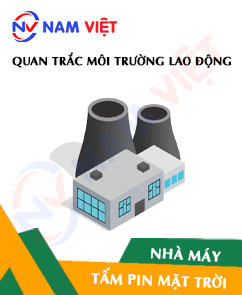
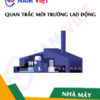
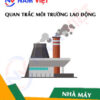
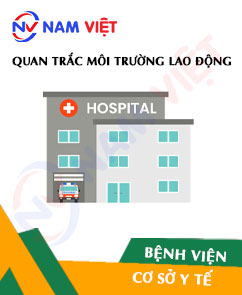




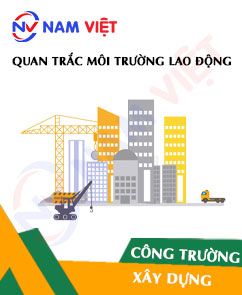
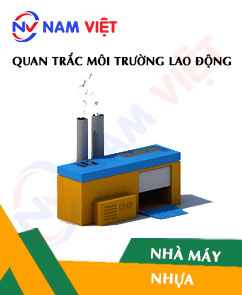

Review Occupational environment monitoring of a solar panel manufacturing factory
There are no reviews yet.